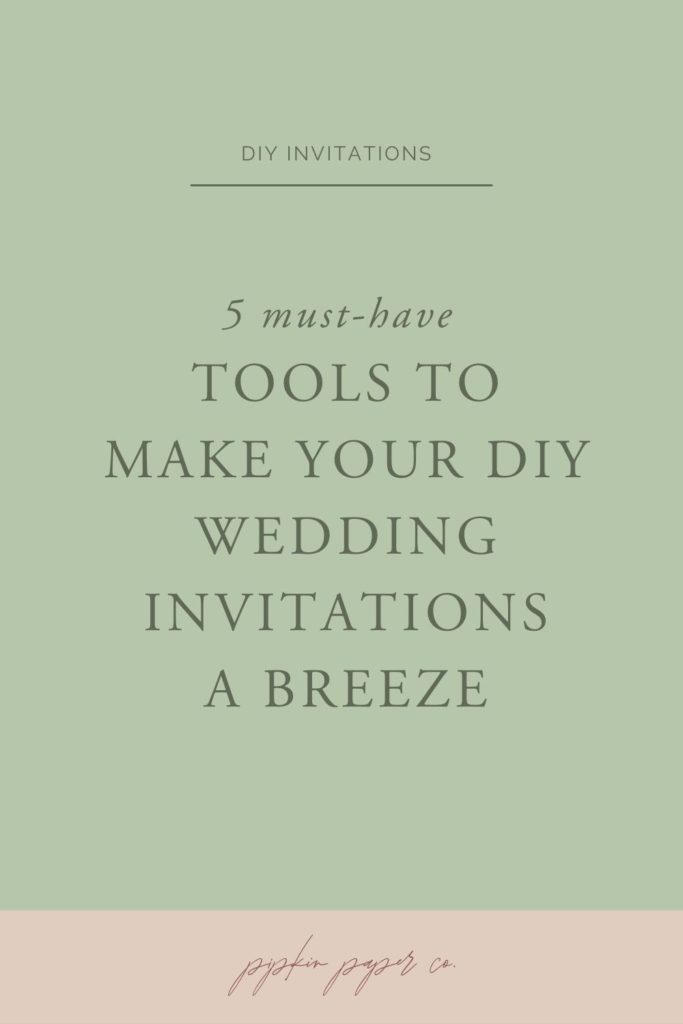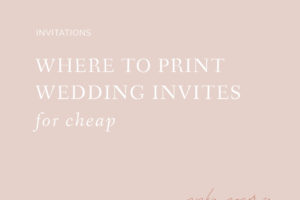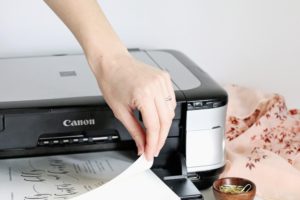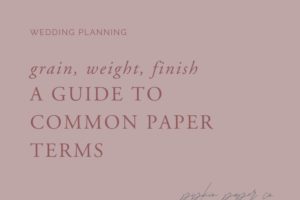5 Must-Have Tools for Making DIY Wedding Invitations
When it comes to making DIY wedding invitations, you really don’t need much more than the bare minimum: a printer, ink, and cardstock. But there are a few tools that will make your life a thousand times easier. As small a business owner, I’m always low on time (and as someone who’s getting married soon, you probably are too), so I have no problem spending a few dollars to save hours in return.
These are the tools that, while technically optional, I still consider must-haves for making DIY wedding invitations a breeze.

5 Tools You Must Have for Making DIY Wedding Invitations
Inexpensive Paper Cutter
If I could recommend investing in one tool to make DIY wedding invitations a breeze, it would be a paper cutter. I know it seems like an added expense you don’t really need. But hear me out…
• For starters, if you’re printing invitations at home, you’ll save a ton of money by printing invitations 2-to-a-page and trimming them out. Not to mention, it’s less wear and tear on your printer, the paper is cheaper, and it’s quicker, to boot.
• One of the reasons professional invitations look so flawless if because they use professional paper cutters. Don’t underestimate the need for clean lines and perfectly squared corners when making stationery look professional.
• They’re inexpensive! The paper cutter I use costs less than $15 on Amazon. And when the blade gets dull, you can buy a replacement for $3. Maybe it’s just me, but I would gladly spend $13 to recoup hours of time spent cutting invitations by hand.
Don’t want to invest in a paper cutter? Then use an X-Acto Knife or Rotary Cutter and a ruler instead. Just whatever you do, don’t use scissors!
Envelope Moistener
If you have hundreds of envelopes to send out, you definitely don’t want to lick each and every one.
(Side note: does this make any one else think of that Seinfeld episode where George’s fiancée, Susan, dies from licking too many wedding envelopes? Just me?)
I used to use a damp sponge to moisten the envelope glue, but because the sponge was so big and the strip of adhesive so small, I’d end up getting the envelope all wet. And that would lead to warping, color bleeding onto the invitations, and just an overall mess of a situation.
Now I use an envelope moistener instead.
This little thing only costs a few bucks on Amazon, but it’s saved me hours of prep time sealing envelopes and I don’t have to worry about ruining the envelopes or stationery inside.
Avery Wraparound Address Labels
Envelope printing isn’t for everyone. It’s stressful, it takes a long time, and if any issues crop up (from my experience, issues always crop up), there may be a lot of Googling and troubleshooting involved.
That’s not meant to scare you off from printing your own envelopes (as a matter of fact, I have a whole troubleshooting blog post here, if you’d still like to go this route). But it is to say that there are alternatives.
If you’d like to skip the envelope drama, then opt for these classic Avery Wraparound Address Labels.
I love them because they don’t look like those cheap address labels we all grew up with. They actually look like high-end address labels you might find at Minted or other wedding invitation shops. Only they cost a fraction of the price.
Not to mention, because the recipient address and return address are printed on a single label, it’s practically a one and done. No need to mess around printing the front and back of the envelope separately. And no need to waste any extra time on your DIY wedding invitations.
To make things even easier, I sell templates made specifically for these Avery labels in the Etsy shop.
Invisible Ink Pen
One thing I wish someone had told when I was getting married? Always number your RSVP cards in invisible ink.
It’s practically guaranteed that someone (or a lot of someones) will absentmindedly send their RSVP card back without their name on it.
And when that happens, you have no choice but to wait until after the return by date and start contacting the stragglers on your list one by one. When you’re two weeks out from your wedding, trust me, it’s the last thing you want to do.
To fix this, you want to put a number next to every address on your mailing list. Then put that same number on the corresponding RSVP card.
When an RSVP comes back without a name on it, you can use a blacklight (choose a pen that comes with a blacklight to make things easy) to read the number on the card and match it up to the name + address on your list.
#crisisaverted
One thing you might not realize until it’s too late is that ink has a tendency to run.
Workable Fixatif
Whether it be the color from your envelopes rubbing off on your invites or the ink from your stationery rubbing off on each other, sometimes ink needs a little help in order to stay put.
That’s where Workable Fixatif comes in.
Lightly mist your invitations and enclosures to prevent the ink from transferring. Or gently spray the inside of your envelopes (especially if they’re a vibrant color and your invitations are white) to keep the colors for running in the mail.
Are there any tools that you got you through making DIY wedding invitations? Let me know in the comments so I can add them to the list!
The information contained on this Website and the resources available for download through this website are for educational and informational purposes only. I am only sharing what worked for me, and as such, I cannot guarantee that any products or processes will give you the same results.





Leave a Reply
We don't like getting spam either. Your email is safe with us.